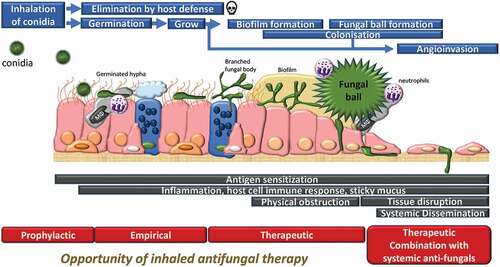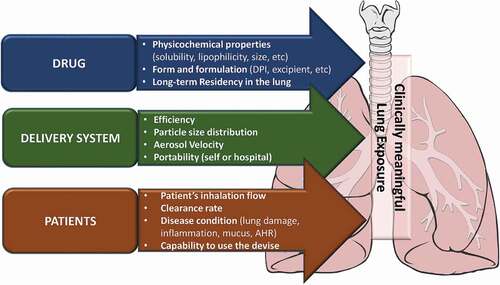Figures & data
Table 1. Preclinical evidence of beneficial effects of inhaled antifungals.
Table 2. Clinical evidence of beneficial effects of inhaled antifungals by off-label use.
Table 3. Novel inhaled antifungals in clinical phase.

![Figure 2. Preclinical in vitro assay method for inhaled antifungals. a) air-liquid interface cultured pseudostratified epithelium (nasal, bronchial, small airway). b) bilayer alveolus model [Citation98]. Black freeform scribble: fungus body. c) A. fumigatus infection in bilayer (apical phase). Histology of alveolus model d) non-infected, e) 48 h post infection with A. fumigatus conidia. Solid arrow: Conidial head and conidiophore, Dotted arrow: hyphae and foot cell, White arrow: original endothelial and epithelial cell bilayer.](/cms/asset/36058f16-4e7e-4ee2-b37a-f3b377158080/iedd_a_2084530_f0002_oc.jpg)

